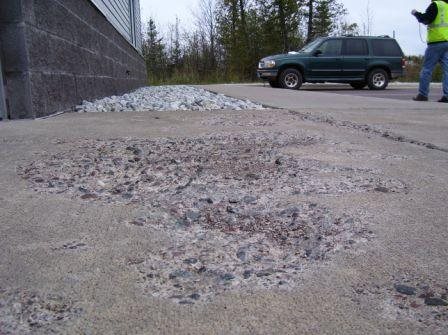Stamped Concrete vs. Regular Concrete: Choosing the Right Option

Concrete is a versatile and durable material used in various construction projects. When it comes to concrete surfaces, you have two primary options: stamped concrete and regular concrete. While both offer their advantages, understanding the differences between them is crucial to making an informed decision. In this article, we will compare stamped concrete and regular concrete, exploring their features, benefits, and applications. By the end, you’ll have a clear understanding of which option is best suited for your specific needs.
Regular Concrete:
Regular concrete, or plain or traditional concrete, is the most common type of concrete used in construction. It consists of a mixture of cement, aggregates (such as sand and gravel), water, and sometimes additional additives for specific purposes. Regular concrete is typically poured and cured on-site, allowing for flexibility in design and application.
The key benefits of regular concrete include its affordability, durability, and versatility. It can be easily formed into different shapes and sizes, making it suitable for a wide range of applications, from foundations and walls to driveways and sidewalks. Regular concrete provides a solid, long-lasting surface that can withstand heavy loads and harsh weather conditions.
However, regular concrete has a plain appearance and lacks decorative elements. It can be enhanced with various surface finishes, such as broom finish or exposed aggregate, but it doesn’t offer the aesthetic options that stamped concrete provides. Regular concrete is a practical choice for projects that prioritize functionality over decorative appeal.
Stamped Concrete:
Stamped concrete, also known as patterned or imprinted concrete, is a decorative concrete option that adds texture, color, and patterns to the surface. It involves the use of specialized stamping tools to engrave designs onto freshly poured concrete before it cures. The stamped patterns can replicate the look of natural materials like stone, brick, tile, or wood, allowing you to achieve the desired aesthetic at a lower cost compared to using those materials directly.
One of the major advantages of stamped concrete is its versatility in design. Stamped concrete provides a wide range of design options and can mimic the appearance of various materials such as brick, stone, slate, and wood. It allows you to achieve the desired look and texture without the need for expensive materials.
In addition to its visual appeal, stamped concrete offers the same durability and longevity as regular concrete. When properly installed and maintained, it can withstand heavy foot traffic, resist fading, and endure the test of time. Regular cleaning and occasional resealing are recommended to protect the surface and maintain its appearance.
Once installed, stamped concrete requires minimal maintenance. It does not require regular sealing or treatments, unlike other materials such as wood or natural stone. Simple cleaning with water and mild detergent is usually sufficient to keep it looking fresh. Stamped concrete can be installed relatively quickly compared to other materials. It is poured and stamped in place, eliminating the need for individual pavers or stones to be laid individually. This can save time during construction or renovation projects.
Choosing the Right Option:
Selecting the appropriate type of concrete depends on several factors, including your project requirements, budget, and desired outcome. If you prioritize functionality, affordability, and a plain appearance, regular concrete is the logical choice. On the other hand, if you seek a decorative and visually appealing surface, stamped concrete provides a wide range of design options.
Conclusion:
Stamped concrete and regular concrete each have their advantages and applications. Regular concrete is a practical and durable choice for projects prioritizing functionality, while stamped concrete offers enhanced aesthetics and versatility. Consider your project requirements, budget, and desired outcome to determine which option suits you best. Whether you opt for the simplicity of regular concrete or the decorative appeal of stamped concrete, both options can provide you with a long-lasting and visually pleasing surface for your construction or renovation needs.




